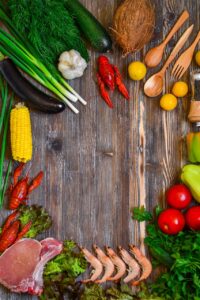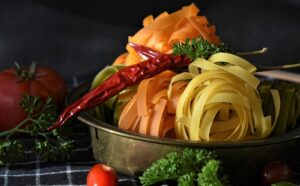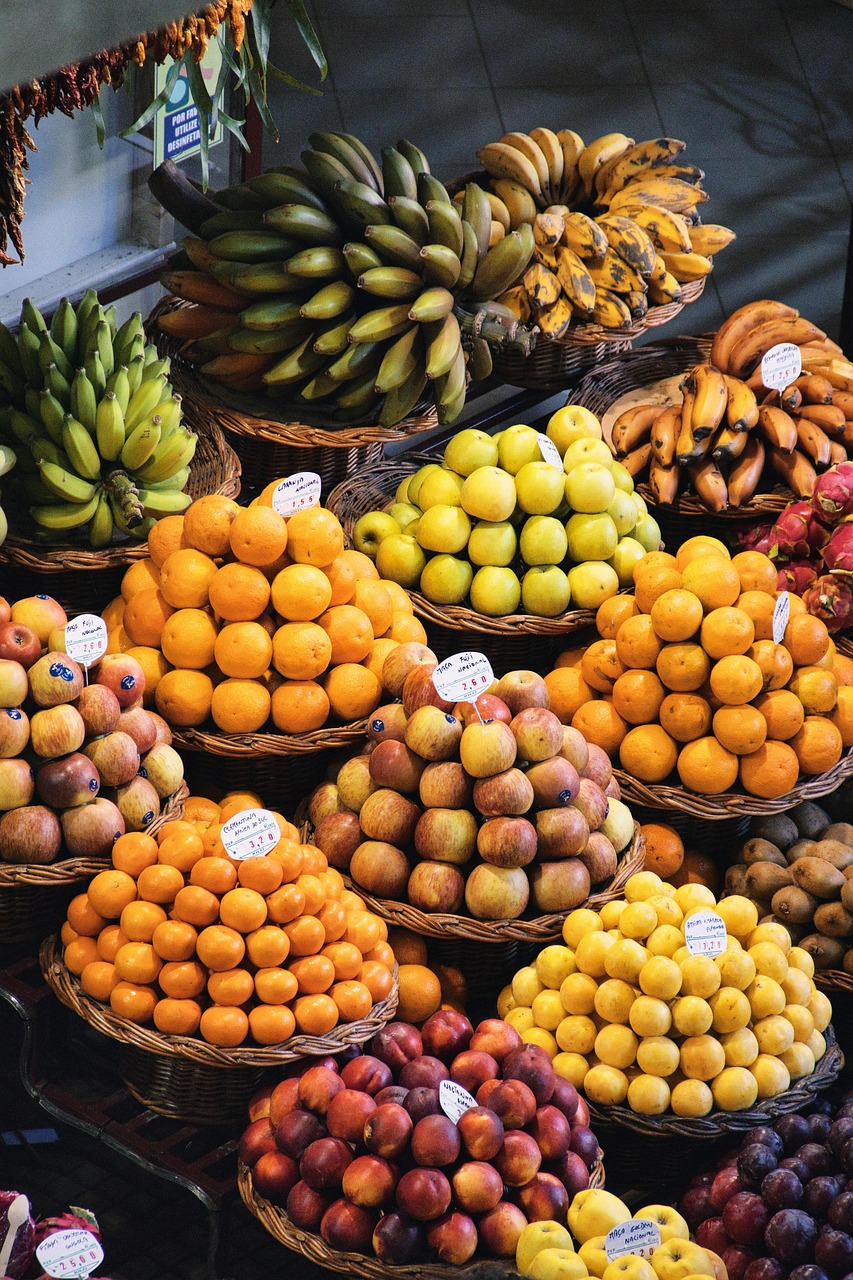Redefining Our Relationship with Food

In a global scenario marked by growing challenges such as food security, massive waste of resources, and the urgent need for more sustainable practices, the way we produce, distribute, and consume food emerges as a central pillar for building a more balanced future. Alternative food and the reuse of food are not mere passing trends; They represent transformative approaches that seek to optimize the use of natural resources, reduce the environmental impact of the food chain, and promote the health and well-being of the population. This article will deepen the understanding of these concepts, exploring their benefits, the challenges inherent in their implementation, and the innovations that are redefining the market and consumption habits. We will look at how adopting these practices can be a catalyst for sustainability, contributing to food security, biodiversity conservation, and building a more circular and regenerative economy. The journey towards more conscious and responsible eating is an imperative, and understanding the nuances of alternative food and reuse is the first step towards this transformation.
What is Alternative Food?
Alternative food, in its essence, transcends the simple choice of specific diets; It represents a philosophy that seeks to offer food options that deviate from conventional consumption patterns, prioritizing sustainability, health, and efficiency in the use of resources. Historically, the term has been associated with several approaches, from multimixture, which combines ingredients of high nutritional value and low cost to combat malnutrition, to more contemporary movements such as vegetarianism, veganism and plant-based diets. The core of alternative food lies in the search for sources of nutrients that are not only beneficial to the human body, but also to the planet.
In the current context, alternative food is often linked to sustainability. This is manifested in the growing demand for organic products, grown without the use of pesticides and chemical fertilizers, which ensure the preservation of soil and biodiversity. The concern with the origin of food and with production methods that minimize environmental impact is a striking feature of this approach. In addition, alternative food encompasses the exploitation of unconventional, often despised foods, such as peels, stalks, leaves, and seeds of fruits and vegetables, which have a high nutritional value and can be incorporated into the diet in a creative and tasty way.
The diversity of options within alternative food is vast. It includes, for example, the adoption of alternative proteins, such as those of vegetable origin (legumes, mushrooms, algae) and those developed through biotechnology (lab-grown meats). These alternatives aim to reduce reliance on conventional meat production, which is resource-intensive and contributes significantly to greenhouse gas emissions. Alternative food also manifests itself in the search for functional foods, which, in addition to their basic nutritional properties, offer additional health benefits, such as disease prevention and strengthening the immune system.
In short, alternative food is a dynamic and constantly evolving concept, driven by awareness of the impacts of food on individual and collective health, as well as the health of the planet. It challenges traditional paradigms, encouraging innovation and creativity in the search for food solutions that are nutritious, affordable and, above all, sustainable. Understanding its multiple facets is crucial to any discussion about the future of food and building a more resilient and equitable food system.
The Food Reuse Imperative

Food waste is one of the most pressing issues today, with large-scale economic, social and environmental implications. It is estimated that a significant portion of global food production is lost or wasted at all stages of the chain, from harvest to final consumption. In this context, the reuse of food emerges as a fundamental strategy to mitigate this problem, transforming what would otherwise be discarded into new nutritional and economic opportunities. Reuse goes beyond simply not throwing away; It involves the intelligent and creative use of parts of food that, by convention or ignorance, are often considered “leftovers” or “leftovers”, but which still have nutritional value and culinary potential.
Historically, many cultures around the world practiced reusing food out of necessity, turning simple, “disposable” ingredients into nutritious and tasty dishes. However, with modernization and abundance in some regions, this practice has been losing ground. Currently, the rediscovery of repurposing is driven by awareness of food safety and sustainability. The practice of using peels, stalks, leaves and seeds of fruits and vegetables, for example, not only enriches the diet with nutrients often concentrated in these parts, but also reduces the volume of organic waste that would otherwise be sent to landfills, where it contributes to the emission of greenhouse gases.
The reuse of food can be categorized into two main approaches: the full use and the reuse of leftovers. Full use refers to the use of all edible parts of a food, even those that are traditionally discarded. Examples include the use of broccoli stalks in soups, fruit peels in candies or teas, and vegetable leaves in stir-fries. The reuse of leftovers, on the other hand, involves the transformation of already prepared foods or ingredients that have not been fully used in new culinary preparations. This can be anything from creating a new dish from cooked vegetables to utilizing stale bread to make toast or puddings.
The benefits of repurposing are multifaceted. From an environmental point of view, it contributes directly to the reduction of food waste, reducing the pressure on natural resources (water, soil, energy) and minimizing the carbon footprint associated with the production and disposal of food. Economically, reuse allows an optimization of the household and business budget, by extracting the maximum value from each ingredient. Socially, the practice promotes food security by making nutritious foods more accessible, and stimulates culinary creativity by encouraging experimentation and appreciation of food in its entirety. In a world where hunger and waste coexist, food repurposing is a practical and powerful solution for building a fairer and more sustainable food system.
Multiple Benefits: Health, Economy and Environment

The adoption of alternative food and food reuse practices generates a comprehensive range of benefits that extend from individual health to planetary sustainability. These benefits are interconnected, creating a virtuous cycle that strengthens the resilience of food systems and promotes a more conscious and responsible lifestyle.
From an individual health perspective, alternative diets, especially those focused on plant-based diets and organic foods, offer a wealth of essential nutrients. The abundance of fiber, vitamins, minerals, and antioxidants present in vegetables, fruits, grains, and legumes contributes to the prevention of several chronic non-communicable diseases, such as cardiovascular disease, type 2 diabetes, and certain types of cancer. Additionally, reducing consumption of processed and animal foods, which often contain high levels of saturated fats, sodium, and sugars, improves overall health, digestion, and can lead to greater physical and mental well-being. Diversifying the diet with less conventional foods can also introduce new flavors and textures, making the eating experience richer and more pleasurable.
In the **economic** sphere, the reuse of food and the choice of low-cost alternative options represent an effective strategy to optimize the household and business budget. By fully using food, avoiding the disposal of edible parts, and transforming leftovers into new preparations, waste is significantly reduced and, consequently, expenses with the purchase of new ingredients. For companies in the food sector, the implementation of reuse practices can lead to the reduction of operating costs, the optimization of inventories, and the creation of new products from by-products, generating added value and new sources of revenue. Alternative food, by promoting the consumption of local and seasonal produce, can also strengthen regional economies and reduce costs associated with transporting food.
The most significant impacts, however, are observed in the environmental sphere. Food production is one of the human activities that consumes the most natural resources and generates environmental impacts. Alternative food and reuse contribute to sustainability in several ways:
* **Carbon Footprint Reduction:** The decrease in meat consumption, especially beef, and the preference for plant-based foods drastically reduce greenhouse gas emissions associated with livestock farming. The reuse of food, in turn, prevents organic waste from being sent to landfills, where it decomposes and releases methane, a potent greenhouse gas.
* **Conservation of Water Resources:** Food production, particularly meat, is extremely water-intensive. The transition to diets with a lower proportion of animal products and the efficient use of all parts of food contribute to water conservation.
* **Soil and Biodiversity Preservation:** Organic agriculture, a pillar of alternative food, avoids the use of pesticides and chemical fertilizers, protecting soil health, biodiversity from insects and microorganisms, and preventing contamination of water bodies. Reuse also reduces the need to expand agricultural areas, preserving natural ecosystems.
* **Minimization of Waste Generation:** By fully utilizing food and its unconventional parts, the volume of organic waste is drastically reduced, relieving pressure on waste management systems and promoting a more circular economy.
Taken together, these benefits demonstrate that alternative food and food repurposing are not just individual choices, but crucial components of a global strategy to address the challenges of sustainability, food security, and public health. They represent an invitation to innovation and change habits, with the potential to radically transform our relationship with food and the planet.
Challenges and Opportunities in the Transition to a Sustainable Food System

Despite the undeniable benefits of alternative food and food repurposing, the transition to a more sustainable food system faces a number of complex challenges. Overcoming these obstacles is crucial for these practices to become the norm, rather than the exception, in the daily lives of the population and in the production and consumption chains.
One of the main challenges lies in cultural perception and acceptance. For a long time, parts of food such as peels and stalks have been associated with waste, and the idea of consuming them can generate strangeness or prejudice. The lack of knowledge about the nutritional value and culinary possibilities of these parts, as well as the absence of recipes and traditions that incorporate them, contribute to waste. Similarly, alternative food, especially plant-based diets, still faces cultural and social barriers, often associated with restrictions or sacrifices rather than health and sustainability opportunities. Continuous education and awareness work is needed to demystify these practices and demonstrate their feasibility and benefits.
Another significant challenge is infrastructure and logistics. The food supply chain is complex and often inefficient, resulting in substantial losses from production to retail. The lack of suitable technologies for food storage, transportation, and processing, especially in developing countries, exacerbates the problem of waste. For large-scale reuse, it is necessary to develop efficient systems for collecting, sorting, and processing leftovers and by-products, as well as distribution channels that allow these foods to reach those who need them. Vertical farming and hydroponic systems, while promising, still require significant investment and technological adaptation to become widely accessible and economically viable.
Legislation and public policy also play a crucial role. In many places, regulation on the use of food by-products and food donation is still incipient or excessively bureaucratic, making it difficult to implement reuse initiatives. It is essential that governments and regulatory bodies create a favorable environment, with tax incentives, clear rules, and support programs that encourage the adoption of sustainable practices by producers, companies, and consumers. Food and nutrition education in schools and communities is also a powerful tool to promote change in habits from an early age.
However, these challenges also open doors to numerous opportunities. Growing consumer awareness of environmental and health issues has driven the demand for products and services that align with alternative food and repurposing. This creates fertile ground for innovation on several fronts:
* **New Products and Ingredients:** The development of plant-based foods with improved textures and flavors, the creation of products from by-products of the food industry (husk flours, seed oils), and the exploration of less conventional protein sources (insects, algae) are examples of how innovation can transform the market.
Processing and Preservation Technologies: Advances in processing technologies, such as 3D food printing, and preservation methods, which extend product shelf life and reduce losses, are essential to system efficiency.
* **Innovative Business Models:** Startups and companies are emerging that are dedicated exclusively to the reuse of food, the production of alternative foods and the creation of platforms that connect producers and consumers, facilitating access to these products.
* **Education and Engagement:** The use of social media and digital influencers has proven effective in disseminating information and recipes about alternative food and reuse, engaging an increasingly larger audience and promoting the change of habits in a more organic and accessible way.
In short, the transition to a more sustainable food system is a complex process, but one that is froze with opportunities. By addressing challenges with creativity, innovation and collaboration between all actors in the chain, it is possible to build a future where food is not only nutritious and affordable, but also truly sustainable and regenerative.
Practical Applications and Tips for Everyday Life

Integrating alternative food and the reuse of food into everyday life may seem like an initial challenge, but with some changes in habit and creativity, it is possible to transform the eating routine into a more sustainable, economical, and healthy practice. The following tips range from food choice to preparation and storage, aiming to maximize use and minimize waste.
- Conscious Planning and Purchasing
The first step to reducing waste and adopting a more alternative diet starts even before cooking: meal planning and shopping. Make a shopping list based on what you really need and intend to consume. Avoid impulse purchases and give preference to seasonal products and products from local producers, which tend to be fresher, more nutritious and with a lower carbon footprint. Check the pantry and refrigerator before you go shopping to avoid duplication and forgetting items that could spoil.
- Full Use of Food
This is the essence of reuse. Many parts of fruits and vegetables that are normally discarded are rich in nutrients and flavor. Explore the use of:
**Skins:** Potato, squash, carrot, and beet skins can be made into crispy chips or added to broths and soups. Citrus peels can be used to make candies, jellies, or flavor drinks. Banana peel, for example, can be used in cakes and farofas.
**Stalks and Leaves:** Stalks of broccoli, cauliflower, and spinach, as well as carrot, beet, and radish leaves, are excellent for stir-fries, pies, green juices, and soups. They are often more nutritious than the very parts we usually consume.
Pumpkin, watermelon, and sunflower seeds, once washed and roasted, become nutritious snacks or can be added to salads and breads. Jackfruit seeds, for example, can be cooked and consumed like chestnuts.
- Creativity in the Kitchen: Transforming Leftovers
Leftover food doesn’t have to go to waste. With a little creativity, they can become the basis for new and delicious meals:
* **Rice and Beans:** Leftover rice can be turned into dumplings, oven rice or added to soups. Cooked beans can be made into tutu, broth or veggie burgers.
Cooked Vegetables: Leftover cooked vegetables can be used in omelets, pies, soufflés, purees, or cold salads.
**Stale Breads:** Crusty breads can be made into toast, breadcrumbs, bread pudding, or croutons for salads.
* **Cooked Meats and Poultry:** Leftover beef or shredded chicken are great for fillings for pies, sandwiches, salads, or to enrich broths.
- Proper Storage
Storing food correctly is crucial to extend its shelf life and prevent waste. Use airtight containers, store fruits and vegetables separately, and pay attention to expiration dates. Freeze portions of food that will not be consumed immediately. Organizing the pantry and refrigerator, with the oldest items in front, also helps ensure that nothing gets overlooked and spoils.
- Home Composting
Even with all the repurposing practices, some parts of the food are inevitably organic waste. Home composting is an excellent way to transform this waste into nutrient-rich fertilizer for plants and gardens, closing the cycle and preventing organic waste from going to landfills. Eggshells, coffee grounds, fruit and vegetable scraps are examples of materials that can be composted.
- Exploring Alternative Foods
In addition to repurposing, incorporate alternative foods into your diet. Try plant-based proteins like lentils, chickpeas, beans, tofu, and tempeh. Discover new grains like quinoa, amaranth, and buckwheat. Explore less common vegetables and seasonal fruits. Small changes can lead to a more diverse, nutritious, and sustainable diet.
Adopting these practices is not just a matter of economy or sustainability; It is an invitation to a new way of relating to food, valuing each ingredient and recognizing the impact of our choices on the planet. It is an active step towards a more conscious and responsible food future.
The Global Context: Waste, Hunger, and the Urgency of Transformation

The discussion about alternative food and food reuse gains an even more critical dimension when inserted in the global panorama. The world faces an alarming paradox: while billions of people suffer from hunger and food insecurity, a colossal amount of food is wasted annually. This dichotomy not only exposes the systemic flaws of our current food model, but also underlines the urgency of a profound transformation in how we produce, distribute, and consume food.
Data from the Food and Agriculture Organization of the United Nations (FAO) reveal that approximately one-third of all food produced for human consumption is lost or wasted globally each year. This equates to about 1.3 billion tons of food, enough to feed billions of people. Waste occurs at all stages of the value chain: from production (losses in harvesting, handling and storage), through processing and distribution, to final consumption in homes, restaurants and retail. Post-harvest losses are particularly high in developing countries, due to inadequate infrastructure and limited storage technologies. In developed countries, on the other hand, waste at the consumption level is the most expressive, driven by buying habits, aesthetic standards and the culture of disposal.
The consequences of this waste are multifaceted and devastating. Environmentally, the production of food that will never be consumed represents an inefficient use of precious resources such as land, water and energy. In addition, food discarded in landfills decomposes anaerobically, releasing methane, a greenhouse gas 25 times more potent than carbon dioxide, contributing significantly to climate change. Economically, food waste generates substantial financial losses for producers, businesses, and consumers, impacting economic security and market stability.
Socially, the paradox of hunger and waste is morally unacceptable. On a planet with finite resources and a growing population, ensuring access to nutritious food for all is a key challenge. Alternative food and food reuse emerge as crucial solutions in this scenario. By promoting the use of low-cost, high-nutritional value foods, and by maximizing the use of each ingredient, these practices can directly contribute to food security, especially in vulnerable communities. Initiatives such as food banks, which rescue surplus food and distribute it to those in need, are practical examples of how reuse can mitigate hunger and reduce waste simultaneously.
In addition, the search for alternative and more resilient food systems is a response to the growing concern about sustainability and the health of the planet. Intensive monoculture, excessive use of pesticides, and reliance on long and complex supply chains make the global food system vulnerable to climate shocks, economic crises, and pandemics. Diversifying food sources, valuing local and seasonal production, and adopting regenerative agricultural practices are key elements to building a more robust and equitable food system. Alternative food, by encouraging the consumption of more sustainably produced food and exploring new sources of protein and nutrients, plays a vital role in this transition. The challenge is to transform this awareness into concrete actions and effective policies that promote food security and sustainability on a global scale.
The Role of Technology and Innovation in the Food Revolution

The transformation of the food system towards sustainability and efficiency is intrinsically linked to technological advances and innovation. Technology not only optimizes existing processes, but also opens doors to entirely new solutions that were previously unimaginable. In the context of alternative food and food repurposing, technological innovation plays a crucial role, from primary production to final consumption, redefining the way we interact with food.
In **food production**, technology is revolutionizing agriculture. Vertical farming and hydroponic systems are notable examples. These techniques allow for the cultivation of food in controlled environments, using significantly less water and space than traditional farming. In vertical farms, plants are grown in vertically stacked layers, often in urban environments, which reduces the need for transportation and, consequently, the carbon footprint. Hydroponics, in turn, grows plants in water-based nutrient solutions, without soil, optimizing the use of resources and minimizing the risk of pests and diseases. These innovations not only increase productivity and food security, but also make food production more resilient to adverse weather conditions.
Biotechnology is another area of innovation that is driving alternative food. The development of alternative proteins, such as lab-grown meats (cellular meat) and precision proteins (produced by fermentation), promises to revolutionize the meat industry. These technologies aim to replicate the texture, taste, and nutritional value of animal meat with a drastically reduced environmental impact, eliminating the need for intensive animal farming. In addition, biotechnology allows us to improve the nutritional value of plants and develop functional ingredients that offer specific health benefits.
When it comes to food reuse, technology offers smart solutions to monitor, reduce and transform waste. Sensors and artificial intelligence systems can predict food demand, optimize inventory management, and identify points of loss in the supply chain. **3D food printing** is an emerging technology that allows you to transform surplus ingredients or by-products into new shapes and textures, creating personalized dishes and minimizing waste. For example, vegetables that do not meet retail aesthetic standards can be processed and used as raw materials for 3D printing, turning them into nutritious and visually appealing meals.
Logistics and distribution also benefit from innovation. Digital platforms and apps connect producers, retailers, and consumers, making it easier to donate surplus food, sell products close to their expiration date, and access alternative foods. Blockchain technology, for example, can increase transparency and traceability in the supply chain, helping to identify and mitigate losses. Intelligent packaging systems, which indicate the freshness of food and extend its shelf life, also contribute to the reduction of waste.
In addition, **education and awareness** are amplified by technology. Social media, video platforms, and cooking apps have become powerful tools to disseminate information about alternative food and repurposing, share innovative recipes, and engage the public in more sustainable practices. Digital influencers and online communities play a key role in popularizing these concepts, making them more accessible and appealing to a wide audience.
In summary, technology and innovation are essential catalysts for the transition to a more sustainable food system. They offer the tools needed to optimize production, reduce waste, create new food options, and educate consumers, paving the way for a future where food is more efficient, equitable, and environmentally responsible.
Future Perspectives: Towards a Regenerative Food System

The road to a truly sustainable and regenerative food system is long and complex, but current trends in alternative food and food repurposing point to a promising future. Future prospects involve even greater integration of technology, effective public policies, cultural shifts, and a growing awareness of the interconnectedness between our food, our health, and the health of the planet.
One of the main perspectives is the **democratization of access** to alternative foods and reuse practices. Currently, many of these options are still perceived as niches or high-cost products. However, with the advancement of technology and the increase in the scale of production, plant-based foods, alternative proteins, and products derived from reuse are expected to become more accessible and competitive in price. This is crucial to ensure that the benefits of these approaches reach all layers of the population, tackling food insecurity and promoting equity.
Continuous innovation will be a key driver. We will see the emergence of new protein sources, such as microalgae and fungi, and the improvement of sustainable farming techniques, such as aquaponics (a combination of aquaculture and hydroponics). Biotechnology research will continue to develop foods with optimized nutrient profiles and lower environmental impact. Artificial intelligence and big data will play a growing role in optimizing the supply chain, forecasting demand, and identifying repurposing opportunities in real time, minimizing losses and waste.
Public policies will play an increasingly active role in promoting sustainable food systems. Governments are expected to implement incentives for the production and consumption of alternative foods, regulate food waste, and support food education initiatives. Collaboration between the public sector, the private sector, academia and civil society will be essential to create an enabling environment for innovation and the adoption of sustainable practices on a large scale. Nutritional and culinary education programs, which teach about the value of making full use of food and the diversity of alternative food, will be crucial to change habits and behaviors.
In addition, the **cultural change** will be a determining factor. Valuing food in its entirety, recognizing the nutritional value of unconventional parts, and raising awareness of the environmental impact of our food choices are processes that are built over the long term. The media, influencers and communities will play a vital role in shaping new narratives about food, making it more conscious, pleasurable and in line with the principles of sustainability. Reuse cooking, for example, can become a gastronomic trend, celebrating creativity and innovation in the kitchen.
Finally, the vision of a **regenerative food system** is the ultimate goal. This means going beyond sustainability, seeking systems that not only minimize negative impact, but actively restore and regenerate ecosystems. Regenerative agriculture, which focuses on soil health and biodiversity, and the circular economy, which seeks to eliminate waste and keep resources in use, are pillars of this vision. Alternative food and the reuse of food are essential components to achieve this regeneration, transforming what was previously considered waste into valuable resources and closing natural cycles.
In short, the future of food is one of innovation, collaboration, and awareness. By embracing alternative food and food repurposing, we are not only nourishing our bodies but also cultivating a healthier planet and a more equitable future for all.
A Call to Action for a Sustainable Food Future

The journey through alternative food and food repurposing reveals not only a set of practices and trends, but a profound redefinition of our relationship with food and the planet. In a world that cries out for solutions to food security, the climate crisis, and the unsustainable use of resources, these approaches emerge as fundamental pillars for building a more resilient, equitable, and healthy future.
We revisited the concept of alternative food, which goes beyond restrictive diets to embrace a philosophy of conscious consumption, valuing organic, plant-based products and the diversity of nutritional sources. We explore the imperative of food reuse, an ancestral practice that is becoming increasingly relevant in the fight against waste, transforming what would otherwise be discarded into new culinary and nutritional opportunities. The multiple benefits of these practices – for individual health, the economy and, crucially, for the environment – were detailed, demonstrating how reducing the carbon footprint, conserving water resources and minimising waste generation are direct results of more conscious choices.
We recognize the challenges inherent in this transition, from cultural and logistical barriers to the need for more robust public policies. However, each challenge presents itself as an opportunity for innovation, driving the development of new technologies, business models and educational approaches. Technology, in particular, has proven to be a powerful ally, from vertical farming and biotechnology to smart waste management systems and social engagement platforms.
The future prospects are promising, pointing to the democratization of access to alternative foods, continuous innovation and an increasingly active role of public policies and cultural change. The vision of a regenerative food system, which not only minimizes negative impact, but actively restores and regenerates ecosystems, is the goal that guides us.
Ultimately, alternative food and food repurposing are not just topics for academic papers or discussions; they are a call to action. Every choice we make as consumers, every dish we prepare, every policy we support has the power to shape the future of our food system. It is an invitation for individuals, communities, businesses and governments to collaborate in building a world where food is a source of nutrition, pleasure and, above all, an engine for sustainability and prosperity for all. The food revolution has already begun, and the engagement of each of us is essential for it to reach its full potential.

Sem comentários